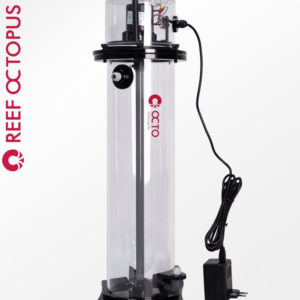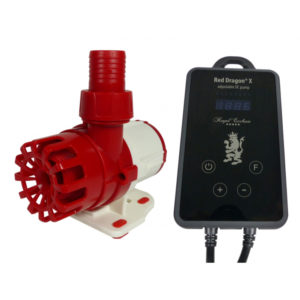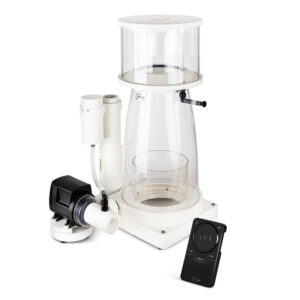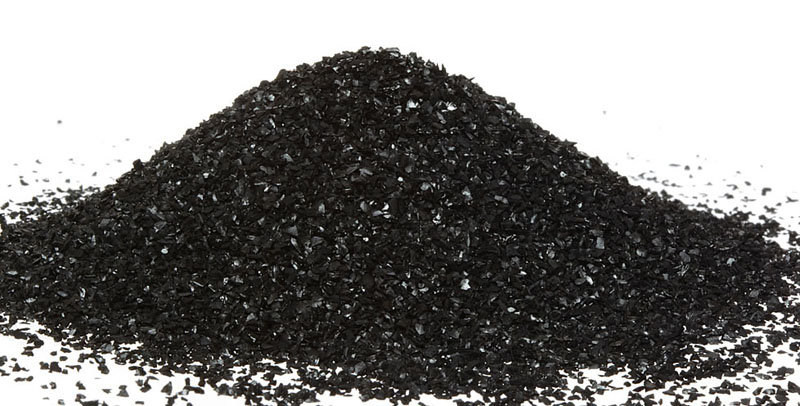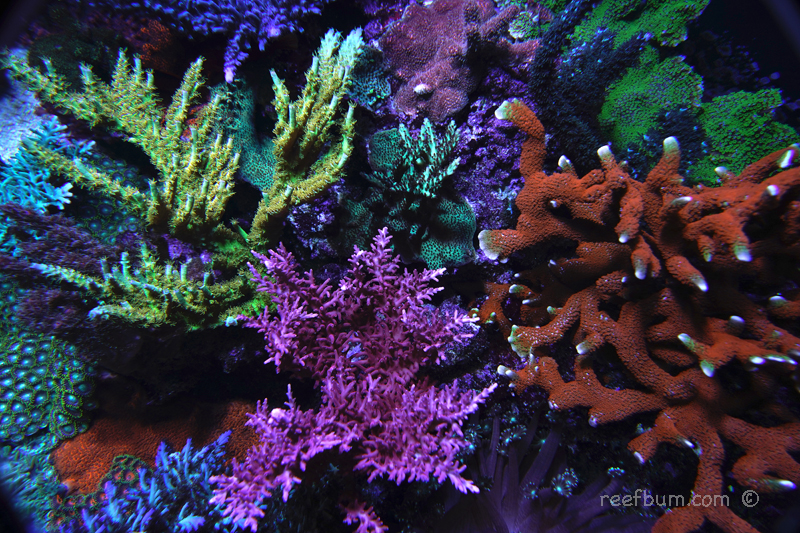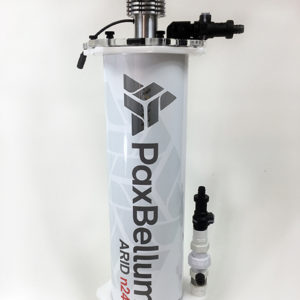By Keith Berkelhamer, Owner of ReefBum, LLC, & Tristan Wilson, Owner of Pax Bellum, LLC
Keeping Chaeto in an algae reactor such as a Pax Bellum ARID is a great way to control nutrients and increase water clarity in a reef tank. It also balances pH by taking up excess CO2 and increases dissolved oxygen. To take advantage of these benefits it is very important to keep Chaeto alive and well. Here are some tips or best practices on how to optimize Chaeto growth and to prevent it from crashing.
The Guidelines….
- Provide sufficient flow through the reactor with a strong enough pump. Record flow by timing how long it takes for the outflow to fill a known volume.
- Don’t have the reactor draw water from a refugium with macro algae. This will compete with Chaeto in a reactor. The elevated dissolved oxygen and lower available elements and nutrients will stunt the algae in the algae reactor.
- Avoid excessive pruning. It is best to harvest a third of the Chaeto once a week or once every two weeks.
- When harvesting Chaeto rinse what you end up keeping in the reactor with sea water, not fresh water. You can use a 5 gallon bucket. Removing the biofilm in this manner is necessary since it is a secondary nutrient export.
- Chaeto needs at least 8 hours of darkness so run the reactor\’s LEDs for no more than 16 hours. Run a reverse daylight cycle to keep the system water pH stable 24/7.
- Acclimate Chaeto to the intense LEDs by slowly ramping up the light cycle over a week. Start with AS LITTLE AS 4 hours. This is not a hard rule but most should start with around 8 hours of light. Dose potassium iodide, especially during acclimation, to reduce photo-oxidative stress.
- Avoid low nitrate levels – Nitrate is the main nutrient needed for Chaeto growth and a nitrate supplement will have to be dosed when using a reactor. Dose as needed to maintain a 100:1 ratio of nitrate to phosphate. The minimum ratio is 20:1 and the maximum is 200:1. Example; If PO4 reads 0.05 ppm set NO3 to 5 ppm or at least 1 ppm.
- Maintain proper levels of phosphate – As stated above, phosphate is important too but Chaeto needs much less of this element versus nitrate. In some cases it may be necessary to dose phosphate to maintain the recommended ratio between NO3 and PO4. Do not let phosphate drop below 0.02 ppm (the ideal range is 0.03 – 0.07 ppm).
- Keep magnesium below 1500 ppm. High magnesium can interfere with the functions of calcium, a key element for plant growth and production. High magnesium can also impact the uptake of potassium, another important element for Chaeto growth¹.
- Maintain proper levels of boron and iron – These elements are also important for Chaeto growth. You can use a supplement to raise Iron and, believe it or not, a laundry detergent booster called Borax to elevate Boron. I use this stuff myself 🙂
- Replace old light sleeves – To maintain the intensity of the LED’s, light sleeves should be replaced 1x per year due to aging and scratches.
- Do not use GFO while using an algae reactor. GFO will strip out certain trace elements important for Chaeto growth.
- Do not use biopellets while using an algae reactor. Biopellets will limit the nitrates needed for Chaeto growth and possibly invert the NO3:PO4 ratio.
- Dose a B12 Supplement – Some anecdotal evidence suggests that B12 is an important vitamin for Chaeto growth. I recently started dosing Vita Chem from Boyd Enterprises, which contains a vitamin B12 supplement. This may be a limiting vitamin for many organisms in the marine environment…..not just for certain algae. Bacteria are the main producers of available B12.²³
Below are ranges to target for key water parameters. Periodic ICP testing is recommended so make sure these parameters do not fall outside of these boundaries.
Optimal Water Parameters for Chaeto
Specific Gravity: 1.024 – 1.025 at 78 – 80F. Lower specific gravity and temperature will have higher dissolved gas holding capacity.
Magnesium: 1350 – 1450 ppm
Calcium: 380 – 480 ppm
Potassium: 380 – 420 ppm
Alkalinity: 8.5 – 9.5 dkh
Boron: 5 – 6 ppm
Iodine: .06 – .12 ppm
PO4: .03 – .07ppm
Additional Resources
If you would like some help with a new tank build, including help designing a custom aquarium, or help re-configuring your current setup then you can visit this page for more information. And if you are looking to add some equipment, I do sell GHL, Pax Bellum, Reef Octopus Calcium and Kalk Reactors and Royal Exclusiv products, including Dreamboxes, which is the equipment I use and recommend. I also sell Reef Brite metal halide and LED fixtures as well as Maxspect & IceCap Gyres.
As for additional insights and information, please explore my many other reef tank and SPS related articles as well as my YouTube channel. For an even deeper dive into reef tank care you can check out my Reef Keeping Master Class. This online course is an immersive and one of a kind educational tool designed to help reef aquarium hobbyists build and maintain a beautiful SPS reef tank. The course is a series of video presentations with some supplemental video from my YouTube channel. There are also quizzes to help students retain and understand the information presented in the course.
Need some frags…..I can help with that as well 🙂 Please visit my SPS Frag store to see what is available.
REFERENCES
1. Peter K. Hepler, Plant Cell. 2005 Aug; 17(8): 2142–2155., Calcium: A Central Regulator of Plant Growth and Development
2. Martin T. Croft, Martin J. Warren, and Alison G. Smith, EUKARYOTIC CELL, Aug. 2006, p. 1175–1183, MINIREVIEWS – Algae Need Their Vitamins
3. Martin T. Croft, Martin J. Warren, and Alison G. Smith, Andrew D. Lawrence and Evelyne Raux-Deery, Nature 438, 90-93 (03 November 2005), Algae acquire vitamin B12 through a symbiotic relationship with bacteria



